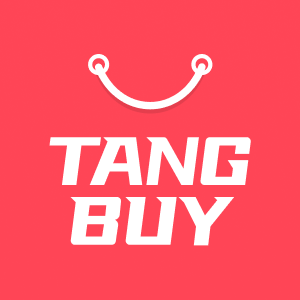Speed, Cost, or Control: How to Priorise When Picking Your Dropshipping Supplier

Choosing the best dropshipping supplier depends on what is most important for your shop. You might want products to get to customers fast. Or you might care more about saving money. Some people want to control the quality of their products. Customers want quick delivery and good products. So you must find suppliers who always meet these needs. If you work with good partners who use trusted shipping and tracking tools, your customers will be happy. Speed can help you stand out. But balancing all these things helps your business last longer.
Key Takeaways
Pick your dropshipping supplier by what your shop needs most. You may want fast delivery, low prices, or good control of quality and service.
Fast shipping makes customers happy and brings them back. Try to match or beat other shops’ delivery times if speed is important.
Keep your costs down by looking at different fees. Talk with suppliers to get better deals. Use local warehouses to save money on shipping and returns.
Build trust by testing products first. Check if your supplier is reliable. Use tracking tools so customers know where their orders are.
Use checklists and decision charts to check your suppliers often. This helps you balance speed, cost, and control for long-term success.
Key Factors

When you pick a dropshipping supplier, you need to think about three things: speed, cost, and control. Each one changes your business in its own way. Let’s look at each so you can decide what is best for your shop.

Speed in Dropshipping
Speed means how fast your supplier sends out orders. Customers want their items quickly. Most top suppliers send orders in 1 to 7 business days. Some, like Spocket and CROV, can deliver in just 1-3 days in the UK or USA. If you want to keep up with big shops like Amazon, you must match these times. Fast shipping can help you get more sales and make people come back. Many shoppers will leave if delivery is slow. If you offer same-day or next-day shipping, you can stand out.
Supplier | Average Shipping Time (Business Days) | Notes |
|---|---|---|
Spocket | 1-7 (typically 1-3 in the UK/USA) | Mainly UK & Europe suppliers |
Printful | 2-4 | |
SaleHoo | 2-4 | Mostly domestic suppliers |
CROV | 1-3 | Balances speed and cost |
Cost Considerations
Cost is not just about the price of the product. You also need to think about shipping, subscription fees, and returns. Here is a quick look at what you might pay:
Cost Component | Details & Examples |
|---|---|
Supplier Fees | £20–£80/month depending on features and order volume |
Product Sampling | Around £150 to test 1–2 products per supplier |
Shipping Fees | Vary by size, weight, and location; local suppliers often cost less |
Returns & Refunds | International returns can be expensive; local suppliers help reduce these costs |
Safety Budget | Set aside 5–10% of sales for refunds and chargebacks |
If your supplier puts up their prices, you may have to do the same. This can make it harder to get customers if they want the lowest price. Keeping costs low helps you make more profit.
Control and Reliability

Control is about how much you can manage product quality, shipping, and customer service. In dropshipping, you do not see the products yourself. So, you need to pick suppliers you can trust. You want partners who send orders on time, keep you updated, and do what they say. Here are some ways to check if a supplier is reliable:
Order samples to see the quality and speed.
Make sure they give tracking and clear return rules.
See how fast they answer your questions.
Tip: Good suppliers help you avoid unhappy customers and keep your shop running well.
Product quality, shipping rules, and supplier trust all matter. If one goes wrong, your business can have problems. Always test suppliers before you choose them, and keep checking how they do as your shop grows.
Prioritising Speed

When Speed Matters
You might wonder if speed should be your top priority. In some markets, it is not just important—it is essential. For example, if you sell in the U.S., customers expect their orders to arrive quickly. Many people now see same-day or next-day delivery as normal. If you sell urgent or high-value items, your buyers may even pay extra for faster shipping.
Here are some situations where speed really matters:
You compete with big names like Amazon Prime or Walmart.
Your customers expect fast delivery, especially in busy cities.
You sell products people need right away, such as gifts or health items.
You want to get more repeat customers and positive reviews.
You ship to places where delays can cause trust issues, like international orders.
Tip: If you want to stand out in a crowded market, offering fast shipping can give you an edge.
You can choose different shipping partners to match your needs. DHL or express couriers work best for urgent or premium orders. Local postal services help with quick domestic deliveries. If you sell small, light items, ePacket can be a good choice, but it is slower.
Impact on Customer Satisfaction
Speed does more than just get parcels to your customers quickly. It shapes how people feel about your shop. Most shoppers say fast shipping makes them more likely to buy again. In fact, nearly nine out of ten online shoppers return to shops that deliver quickly. If you offer same-day or next-day delivery, you can boost your sales by up to 20%.
Slow shipping can hurt your business. Many customers will leave their basket if they see long delivery times. Late orders or missing tracking details often lead to complaints. If you keep your promises and update customers about their orders, you build trust.
Fast shipping means fewer complaints and more happy customers.
Clear updates and tracking help people feel in control.
Meeting delivery promises leads to better reviews and more repeat buyers.
Note: Always check that your supplier can deliver on the speed you promise. If you set the right expectations, you will avoid most shipping complaints.
Focusing on Cost

Managing Expenses
If you want your dropshipping business to make money, you need to keep a close eye on costs. It’s not just about the price you pay for each product. Shipping fees, platform charges, and even returns all eat into your profits. High shipping costs can scare off customers, especially if they seem too high or are not clear. Many shoppers will leave their basket if they see a big delivery fee at checkout.
You can boost your profit margins by comparing shipping rates with your competitors. Try to match or beat their prices when you can. Some shops offer free shipping to attract more buyers, but you must include that cost in your product price. If you don’t, you might lose money on every sale. Local suppliers often help you save on shipping, especially for heavy or bulky items.
Here’s a quick breakdown of what affects your profits:
Product cost and shipping fees are the biggest expenses.
Shipping speed, package size, and destination change the price you pay.
Using local warehouses can cut down on international shipping costs.
Free shipping works well, but only if you plan for it in your pricing.
Your gross profit is what’s left after product costs. Net profit comes after you pay for shipping, marketing, and platform fees.
Tip: Keep checking your numbers. If your costs go up, adjust your prices or find new suppliers to protect your margins.
Negotiation Tips
You don’t have to accept the first price a supplier gives you. Good negotiation can save you money and help you grow your business. Start by learning about your supplier and what other shops pay for similar products. If you know your best alternative, you can walk away if the deal isn’t right.
Set clear goals before you talk. Decide the highest price you’ll pay and stick to it. Build a good relationship with your supplier. When they trust you, they may offer better rates or faster shipping. If you order in bulk or promise repeat business, ask for a discount or better terms.
Here are some handy negotiation tips:
Compare several suppliers to find the best mix of price and quality.
Ask open questions to learn about special deals or flexible payment options.
Use silence. Sometimes, waiting makes the supplier offer a better price.
Don’t be afraid to walk away if the deal doesn’t work for you.
Note: Keep talking to your suppliers even after you make a deal. Good communication helps you get better prices and service in the long run.
Ensuring Control
Shipping Options
You want to feel in control of every order that leaves your shop. That starts with your shipping choices. If you pick the right shipping partners, you can keep your promises to customers. Reliable shipping means fewer headaches and happier buyers.
Here’s how you can keep control over shipping and tracking:
Keep your customers in the loop. Let them know when you ship their order, if there are any delays, or if something changes.
Offer more than one tracking option. Some people like to use 17track, while others prefer UPS or Royal Mail.
Use dropshipping apps like Tangbuy to track orders from different suppliers in one place. This saves you time and helps you spot problems early.
Watch your shipments in real time. If something goes wrong, you can fix it before your customer even notices.
Work with tracking providers who give clear, up-to-date information.
Choose tracking tools that work with all your suppliers and platforms. This makes your life much easier.
Tip: Give your customers an estimated delivery date. This sets clear expectations and cuts down on “Where’s my order?” messages.

Quality and Tracking
You want your customers to trust your shop. That means you must make sure every product meets your standards. You can do this by checking your suppliers before you start working with them.
Test products yourself. Order samples and check for quality, safety, and how they look.
Set clear rules with your suppliers about what you expect. Write down your standards and agree on how to handle returns.
Keep talking to your suppliers. Regular chats help you spot problems early and fix them fast.
Use technology to track quality. Some apps let you see reviews, defect rates, and delivery times all in one place.
Always have a backup supplier. If one runs out of stock, you can switch quickly and avoid delays.
Note: Shops that switched to reliable, local suppliers saw returns drop by 40% and delivery times cut from weeks to days. This led to more happy reviews and repeat customers.
Balancing Priorities

Self-Assessment
Before you choose a dropshipping supplier, think about what matters most. Do you want to send orders very fast? Is saving money more important to you? Or do you want to control the quality and how customers feel? Your answers will help you pick the right partners.
There is a simple way to help you decide. Many shops use the '8 Pillars' method. This means you look at:
How fast and far they can ship
If the supplier is reliable
How many products they offer
How much everything costs
What technology and automation they use
How they check product quality
If they can change their services for you
How good their customer support is
Ask yourself these questions:
What do your customers want most—fast delivery, low prices, or great quality?
Which products sell best? Would they be better with faster shipping or nicer packaging?
How much can you spend on shipping and returns without losing money?
Do you need special things like branded boxes or live stock updates?
Can your supplier handle lots of orders at once or sudden changes?
If you sell popular items that people want quickly, speed might be most important. If you have a small shop with loyal buyers, you might care more about quality and control.
Some shops use two ways to ship. They send slow-selling products straight from suppliers. They keep bestsellers in a local warehouse. This gives you quick delivery for popular items and saves money on others.
You can also use a decision chart to compare suppliers. Here’s an easy example:
Criteria | Weight (1-5) | Supplier A | Supplier B | Supplier C |
|---|---|---|---|---|
Total Cost | 5 | 4 | 5 | 3 |
Quality and Performance | 4 | 5 | 3 | 4 |
Delivery and Reliability | 5 | 3 | 4 | 5 |
Technology Integration | 3 | 4 | 4 | 3 |
Customer Support | 4 | 5 | 3 | 4 |
You give each supplier a score for each thing, multiply by the weight, and add up the scores. This helps you see which supplier is best for you.
Supplier Checklist
Once you know what matters, use a checklist to find the right supplier. Here’s what to look for:
Find suppliers with good reviews from other shop owners.
Check if they have a clear website, real address, and ways to contact them.
Make sure they show shipping times, return rules, and product details.
Place a test order to check how fast they ship and how they pack.
Look for suppliers with enough stock and good products.
Compare prices and shipping fees to see if you can make money.
Check if they offer fast, trackable shipping.
Test their customer support by sending a message and seeing how fast they reply.
Keep talking to your supplier so you can fix problems early.
Always have a backup supplier in case your main one runs out.
A fashion shop changed from an overseas supplier to a local one. Delivery times went from three weeks to three days. Returns dropped by 40% and they got 20% more good reviews.
You should also watch how your supplier is doing. Use tools like scorecards, customer feedback, and dashboards to track them over time. If you see problems, talk to your supplier or look for new ones.
Remember, your business goals and your customers’ needs will help you balance speed, cost, and control. If you want to save money, focus on deals and better processes. If you want happy customers, make sure you send the right product on time. Sometimes, you may need to pay more for better quality or faster shipping. The key is to know what matters most for your shop and make choices that fit.
Choosing the right dropshipping supplier shapes your shop’s future. When you match your supplier to your goals and what your customers want, you set yourself up for long-term success. You might expand your product range, build strong supplier relationships, or keep costs low—each step helps you stay competitive. Remember, there’s no single answer for everyone. Regularly review your suppliers, check their performance, and don’t be afraid to negotiate better terms.
Take time to research, test, and compare. Use a checklist or decision chart to spot the best fit. Review your current suppliers today and see where you can boost speed, cut costs, or gain more control.
FAQ
How do I know if a dropshipping supplier is reliable?
You can check reviews from other shop owners. Order a sample to see the quality and speed. Good suppliers answer your questions quickly and share clear shipping details.
Can I use more than one supplier for my shop?
Yes, you can. Many shops use several suppliers. This helps you avoid stock problems and gives you more product choices. You can also compare prices and shipping times.
What should I do if my supplier raises prices?
Don’t panic!
You can talk to your supplier and ask for a better deal. If that does not work, look for new suppliers. Always keep an eye on your costs.
How can I offer fast shipping without losing money?
Use local suppliers for popular items.
Add shipping costs to your product price.
Offer free shipping only when it makes sense for your profit.
Tip: Always check your numbers before you promise fast delivery.

TangBuy: A Smarter Way to Dropship in 2025
If you're looking to stay competitive with dropshipping in 2025, speed and trend-awareness are key. TangBuy helps you stay ahead with real-time product trends, fast fulfilment, and factory-direct sourcing. With over 1 million ready-to-ship items, 24-hour order processing, and seamless Shopify integration, TangBuy makes it easier to test, scale, and succeed in today's fast-moving eCommerce landscape.
See Also
Selecting Dropshippers Or Wholesalers For Your Business Success
Understanding The Real Expenses Of Dropshipping In 2025
Effective Ways To Manage Shipping Costs In Dropshipping

